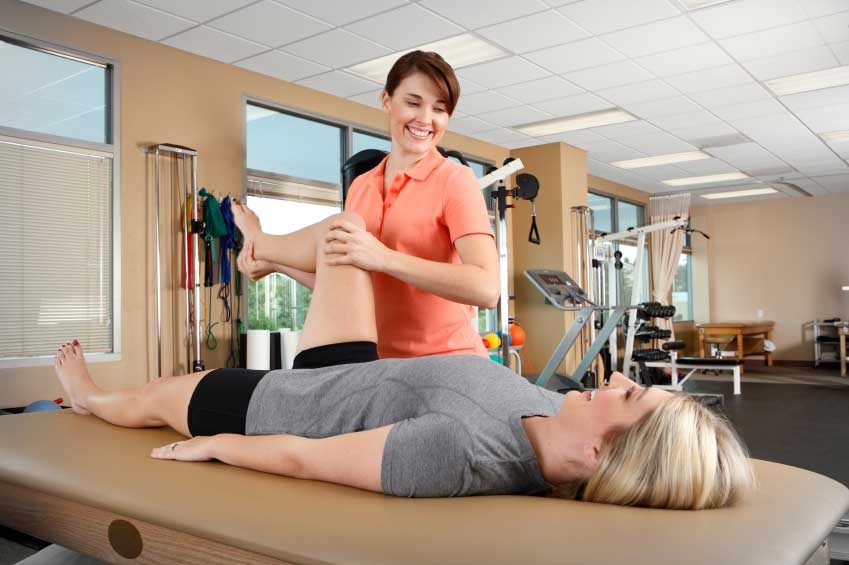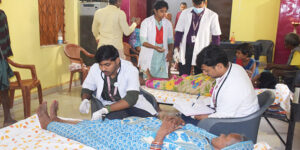Introduction
If you’re a medical student exploring specialized fields within physiotherapy, you’ve likely come across the intriguing world of women’s health physiotherapy.
One of the most promising and rewarding paths in this field is pursuing a Master of Physiotherapy in Gynaecology, often abbreviated as “MPT in gynaecology.”
In this article, we’ll take you through a day in the life of a women’s health physiotherapist, shedding light on the critical role they play in enhancing the well-being of women.
Morning Clinic Sessions:

A typical day for an MPT in gynaecology starts early with morning clinic sessions.
These sessions involve one-on-one consultations with patients who seek physiotherapy services for various gynaecological issues.
Patients may present with conditions like pelvic pain, incontinence, or musculoskeletal discomfort related to pregnancy or childbirth.
The MPT’s primary role during these sessions is to assess, diagnose, and create personalized treatment plans to address these concerns.
Read More: BMLT Course
Preparing for the Day:
Before the first patient arrives, the women’s health physiotherapist reviews their appointment schedule and gathers any necessary assessment tools or equipment.
This preparation ensures a seamless flow of appointments throughout the day.
It’s also essential to maintain a clean and sanitized workspace, adhering to strict hygiene standards, especially when dealing with sensitive health issues.
Read More: MPT Neurology Course
Patient Assessment and Education:
Each patient undergoes a thorough assessment to understand their specific condition and needs.
During this process, the physiotherapist employs specialized techniques and tools to evaluate pelvic floor strength, mobility, and function.
It’s a delicate and patient-centric approach that emphasizes comfort and trust-building.
Simultaneously, patient education plays a vital role in women’s health physiotherapy.
The MPT takes the time to educate patients about their condition, the treatment plan, and exercises they can perform at home. Empowering patients with knowledge equips them to actively participate in their healing process.
Read More: Clinical Psychology Course
Treatment Modalities:
MPTs in gynaecology employ a range of treatment modalities tailored to each patient’s needs.
These may include pelvic floor exercises, manual therapy, biofeedback, and electrical stimulation. The goal is to alleviate pain, improve muscle function, and enhance overall quality of life.
Collaborative Approach:
Women’s health physiotherapists often work in collaboration with gynaecologists, obstetricians, and other healthcare professionals.
This collaborative approach ensures comprehensive care for patients, addressing both the physical and medical aspects of gynaecological issues.
Research and Continuing Education:
In addition to clinical practice, women’s health physiotherapists engage in ongoing research to advance their field.
Staying updated with the latest developments in women’s health and physiotherapy is crucial for providing evidence-based care.
Many MPT programs offer research components that enable aspiring physiotherapists to contribute to the field’s growth.
IHS Introduces India’s Most Affordable: Medical Courses List without NEET
Advocacy and Awareness:
MPTs in gynaecology also play a role in advocating for women’s health issues and raising awareness about the importance of physiotherapy in addressing gynaecological conditions.
They may participate in community events, workshops, and educational campaigns to promote women’s well-being.
Conclusion
A day in the life of a women’s health physiotherapist is filled with purpose and patient-centered care.
By pursuing an MPT in gynaecology, medical students can embark on a fulfilling career path dedicated to improving the lives of women through specialized physiotherapy interventions.
Whether you’re treating pelvic pain, guiding postpartum recovery, or enhancing pelvic floor health, this field offers endless opportunities to make a meaningful impact on women’s health and wellness.
MPT In Gynaecology At Autonomous IHS




The Master of Physiotherapy (MPT) in Gynaecology program at Autonomous Institute of Health Sciences (HIS) is a comprehensive two-year course designed to equip students with specialized knowledge and skills in women’s health physiotherapy.
Candidates eligible for this program must have completed a Bachelor’s in Physiotherapy (BPT) with a minimum of 50% marks and a mandatory 6-month internship.
Program Duration: 2 Years (Total – 4 Semesters)
Eligibility Criteria:
- The candidate must have completed their BPT from a recognized university with a minimum of 50% marks.
- The candidate must have completed 6 months of compulsory internship.
Fees Details:
- Admission Fees: Rs. 20,000/- (One Time)
- Semester Fees: Rs. 40,000/-
- Hostel Facility: Available for both boys and girls (charges depend on the facility)
Note: Externship may be paid or free.
Contact Us: 7003407791
Frequently Asked Questions (FAQs)
What’s the typical income for MPT professionals specializing in Obstetrics and Gynecology in India?
The typical income for MPT professionals specializing in Obstetrics and Gynecology in India can range from INR 3-8 lakhs per annum, depending on factors like experience and location.
What responsibilities does a physiotherapist have in the field of gynecology?
Physiotherapists in gynecology play a crucial role in:
- Assessing and treating musculoskeletal issues
- Addressing pelvic floor dysfunction
- Providing rehabilitation after gynecological surgeries
- Offering guidance on exercises and lifestyle modifications for women’s health.
Which MPT specialization offers the best career prospects?
Among MPT specializations, Orthopedic Physiotherapy and Neurological Physiotherapy tend to offer strong career prospects due to the high demand for rehabilitation services in these areas.
How many semesters does an MPT program typically comprise?
An MPT program typically comprises four semesters, with each semester lasting around six months.
Is it possible to pursue gynecology after completing a BPT?
Yes, it is possible to pursue gynecology after completing a BPT (Bachelor of Physiotherapy) program. However, gynecology typically requires medical qualifications like MBBS or MD.
Is physiotherapy a suitable career choice for female students?
Yes, physiotherapy is a suitable and rewarding career choice for female students, offering opportunities for specialization in various areas of healthcare.
What career opportunities are available to female graduates after completing a BPT program?
Female graduates completing a BPT program can explore diverse career opportunities, including:
- Clinical practice
- Teaching
- Research
- Sports rehabilitation
- And more.
Between BDS and BPT, which profession tends to have higher earning potential?
In terms of earning potential, BDS (Bachelor of Dental Surgery) professionals often have higher income prospects compared to BPT graduates.
What is the average monthly salary for MPT professionals in India?
The average monthly salary for MPT professionals in India ranges from INR 25,000 to 50,000, depending on factors like experience and location.
